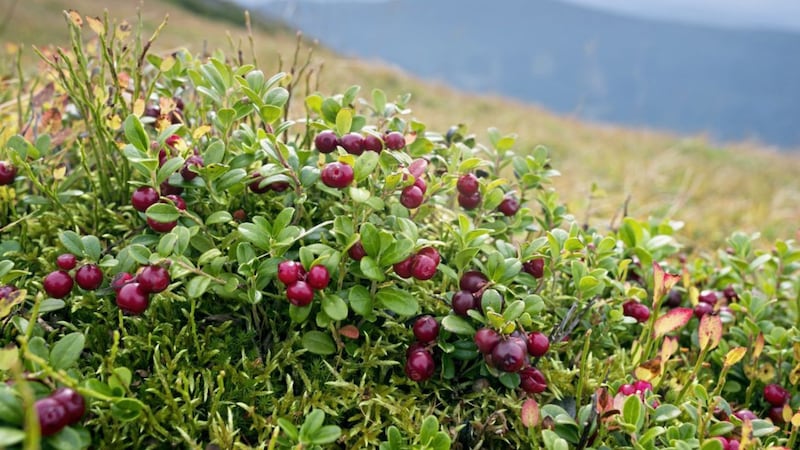MY LATE father loved cooking, especially the Christmas dinner. Like many others, I suspect, he began his cooking in earnest on Christmas eve after days of preparation. Assisted only by a glass or two of Irish whiskey, he conjured up warm aromas of clove, boiling ham on the range, home-made stuffing and simmering vegetable soup flavoured with turkey giblets.
Mouthwatering smells filled the kitchen, smells which intensified on Christmas day itself and then lingered for several days thereafter. One of the key elements of the dinner was the cranberry sauce, for many, the essential accompaniment to turkey at Christmas time here and also at Thanksgiving dinners in America and Canada. Again, like others, I’m sure, my father preferred to make his own sauce from wild cranberries rather than buy it already processed.
I had always been told by an old friend that wild cranberries grow in one of our local bogs which I searched recently, though probably not thoroughly enough as I was unable to find them. The wild cranberry, Vaccinium oxycoccos does grow throughout the acidic bogs of northern Europe, including the midlands and north of Ireland.
Related to bilberries and blueberries, the cranberry was so named by early European pilgrim settlers in America, who thought its stem and blossom resembled the head and bill of a crane. Alternative names include, mossberry, bogberry and fenberry.
In New England in the 17th century they were sometimes called ‘bearberries’ as bears were often seen feeding on them. Its Irish ‘mónóg’ from móin meaning peat-bog or turf has some county variations like móineog and mónadán. Cranberry is noted as one of the wild fruits favoured by ‘Mad Sweeney’ the Irish king cursed and cast out by St Ronan, to live a life of wandering in the wilds. He says: "I love the precious bogberries, they are sweeter than any’."
The cranberry is a low creeping shrub with slender wiry stems, small evergreen leaves and dark pink flowers. Its berries are initially green and turn red when ripe. In North America where cranberries are a major commercial crop, the Native Americans were the first to use the berries as food, with the Pequot tribe from Cape Cod calling them 'ibimi’ or bitter berry.
The berries were used in a variety of foods, especially for the highly nutritious ‘pemmican’ where mashed cranberries were mixed with a concentrated blend of fat and protein from lean, dried meat, often deer or moose. They also used cranberries for medicine in poultices to draw poison from arrow wounds and the fruit’s rich red juice provided a natural dye for rugs, blankets and various items of clothing.
James Rosier,an English explorer from Suffolk, wrote in The Land of Virginia (1605) of Europeans coming ashore and meeting Native Americans carrying cups full of cranberries. Another English traveller and author, John Josselyn, who wrote extensively about the flora and fauna of New England, described cranberries in his book, New England Rarities Discovered (1672) as having an ‘‘astringent taste’’ and being ‘‘excellent against the scurvy.’’ He says, ‘‘They are also good to allay the fervor of hoof diseases’’.
For all of their many uses, cranberries were not farmed on a large scale in America and other countries until the 1800s. Initially farmers picked the berries by hand. More efficient dry harvesting techniques were developed but the process was eventually revolutionised by ‘wet harvesting’ a method of flooding the beds during autumn so that the cranberries float to the surface.
I might just go in search again of this festive plant. Beannachtaí an tséasúir. Season's greetings to you all.








